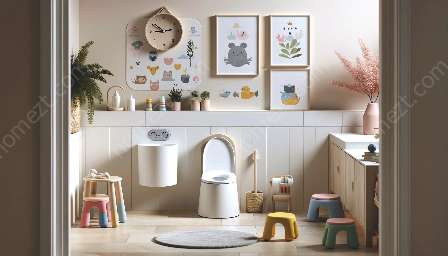When it comes to potty training, parents and caregivers often seek effective and positive methods to encourage their child's progress. Positive reinforcement is a popular and research-backed approach that can make the potty training process more pleasant and successful for both children and caregivers. In this topic cluster, we'll explore the concept of positive reinforcement in potty training, its benefits, and how to implement it. We'll also discuss how to set up a nurturing nursery and playroom environment that supports and complements the potty training journey.
Understanding Positive Reinforcement in Potty Training
Positive reinforcement involves providing rewards or encouragement to reinforce desired behaviors. In the context of potty training, it means acknowledging and celebrating a child's successful use of the potty, which can motivate them to continue doing so. This approach focuses on praising the child for their efforts and achievements, rather than using punitive measures for accidents or setbacks.
The Benefits of Positive Reinforcement
Using positive reinforcement in potty training offers several benefits for both children and caregivers. It creates a supportive and loving environment that boosts a child's confidence and self-esteem as they master this important milestone. Additionally, positive reinforcement fosters a closer bond between caregivers and children as they celebrate small victories together.
Implementing Positive Reinforcement
Parents and caregivers can implement positive reinforcement in potty training by using a combination of verbal praise, tangible rewards, and other forms of encouragement. Verbal praise, such as saying


